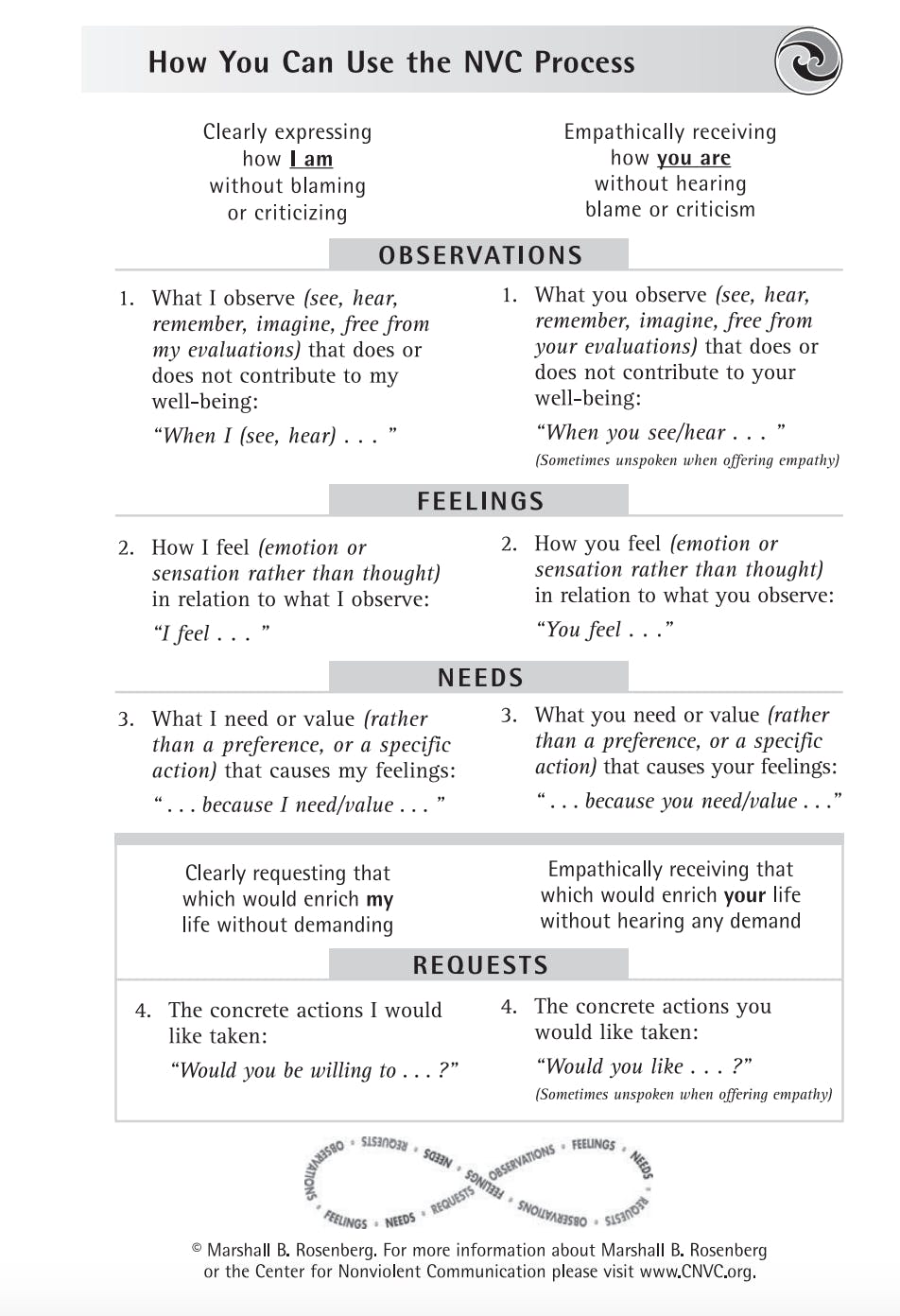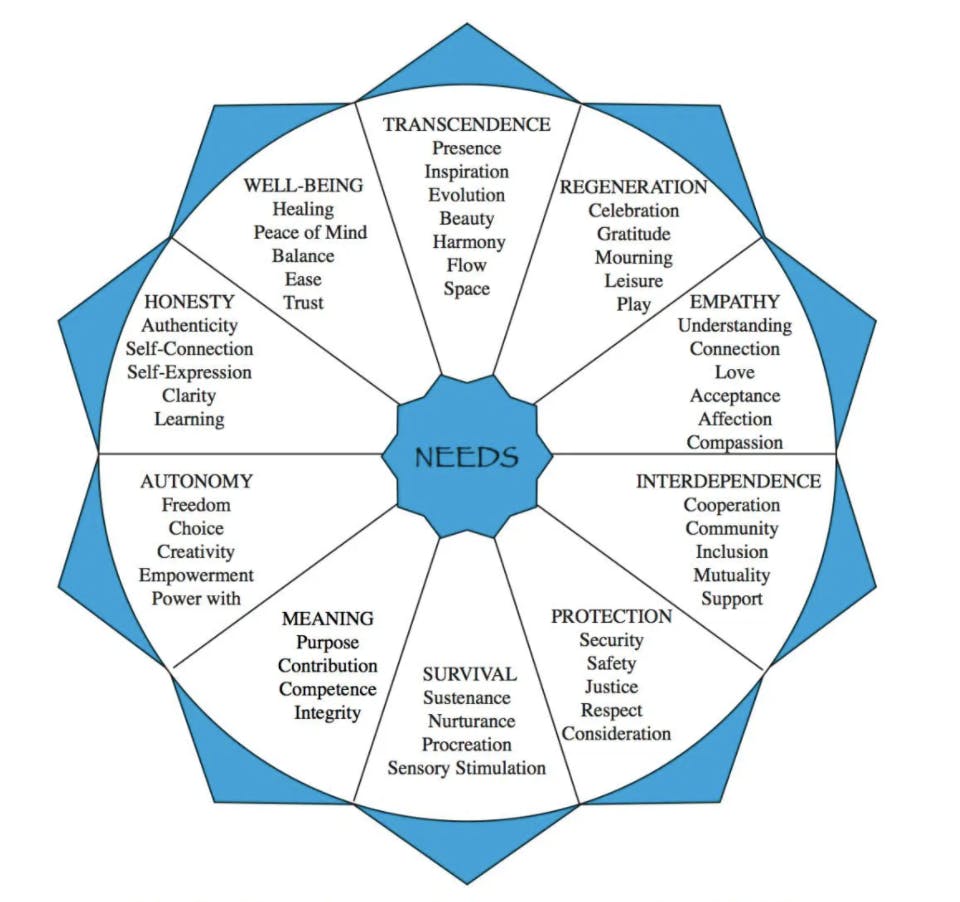"Connect deeply with others. Our humanity is the one thing that we all have in common." - Melinda Gates, American philanthropist
Communication is what enables us to connect with others. As humans, we are social animals. A sense of connection fulfills our psychological needs to feel belonging, esteem, and love.
To communicate authentically and courageously, we must cultivate awareness of our truth. As we communicate more of our truth to others, it is critical that we do so consciously and compassionately. When we communicate passive-aggressively, reactively, or violently, we can cause a lot of unnecessary damage. Alternatively, compassionate communication can foster healthy relationships with all kinds of people.
Compassionate communication can be broken into two main components:
- Knowing our truth (self-empathy)
- Sharing our truth (self-expression)
Nonviolent Communication (NVC) is a framework for compassionately connecting with ourselves and others. It is a process of translating internal messages into feelings, needs, and requests. This approach to communication can be effectively applied to all situations, from personal to professional relationships, and conflicts of any nature.

NVC shows people how to create peace within themselves which fosters connections with other people. The most direct path to peace with ourselves and others is through self-connection and awareness of our truth. It is the practice of opening your heart to the present moment while acknowledging without judgment your feelings and needs.
Like most things, we need to practice NVC to use it effectively. Start by thinking about a time when communication did not go well. With this situation in mind, practice going through the four-part NVC process. The goal of NVC is to practice clearly expressing how we feel and what we need at the moment without blaming or criticizing.

Step one, objectively observe the situation without blame, evaluation, or judgment. Name what you see, hear, observe, or remember factually, free from evaluation.
“When I see you look at your phone in the middle of our conversation...”
Step two, identify the feelings that the situation brings up. What emotions or sensations come up in relation to what you observe? We all have basic feelings related to whether or not our needs are fulfilled.

“When I see you look at your phone in the middle of our conversation, I feel annoyed...”
Step three, dig deeper to identify what need is or is not being met. Consider what you need or value that is causing your feelings.

“When I see you look at your phone in the middle of our conversation, I feel annoyed because I need your presence and value connection.”
Step four, request actions that would better meet your needs. Clearly request what would support your needs without demanding.
“When I see you look at your phone in the middle of our conversation, I feel annoyed because I need presence and value connection. Would you be willing to put your phone away during our conversations?”
Practicing NVC increases empathy as well as our ability to show up compassionately for ourselves and others. How will you make compassionate communication part of your wellness practice? Please share if you found this information helpful or comment with any questions. Thank you for reading!
The Develop Wellness articles are inspired by a series of wellness workshops that I facilitated with Women Who Code Boston. Check out our events for more!

